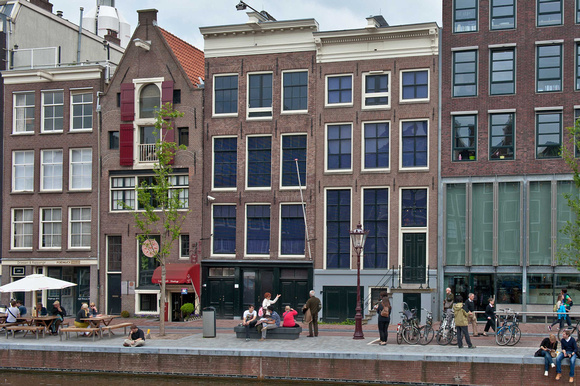The house of Anne Frank is behind the black doors .
It was here that Anne Frank, the teenager who wrote a diary about her hiding from the Nazi persecution during the second world, hid with her family and the family of a friend. It is converted into a museum and is one of the most visited attraction of the country. It was inaugurated in the year 1960.
The house — and the one next door at number 265, which was later purchased by the museum — was built by Dirk van Delft in 1635. The canal-side facade dates from a renovation of 1740 when the rear annex was demolished and the taller one which now stands in its place was built. It was originally a private residence, then a warehouse, and in the nineteenth century, the front warehouse with its wide stable-like doors was used to house horses. At the start of the 20th century a manufacturer of household appliances occupied the building, succeeded in 1930 by a producer of piano rolls, who vacated the property by 1939. On 1 December 1940 Anne's father Otto Frank moved the offices of the spice and gelling companies he worked for, Opekta and Pectacon, from an address on Singel canal to Prinsengracht 263.The ground floor consisted of three sections; the front was the goods and dispatch entrance, behind it in the middle section were the spice mills, and at the rear, which was the ground floor of the annex, was the warehouse where the goods were packed for distribution. On the first floor above were the offices of Frank's employees; Miep Gies, Bep Voskuijl and Johannes Kleiman in the front office; Victor Kugler in the middle; with Otto Frank in the rear office above the warehouse and below the floors which would later hide him and his family for two years until their betrayal to the Nazi authorities.


